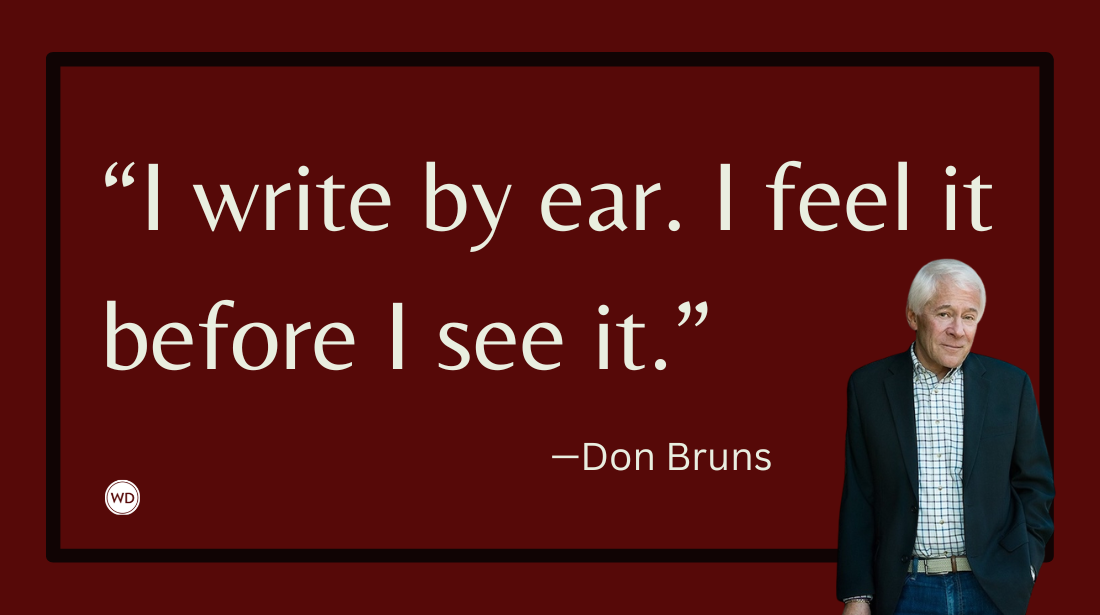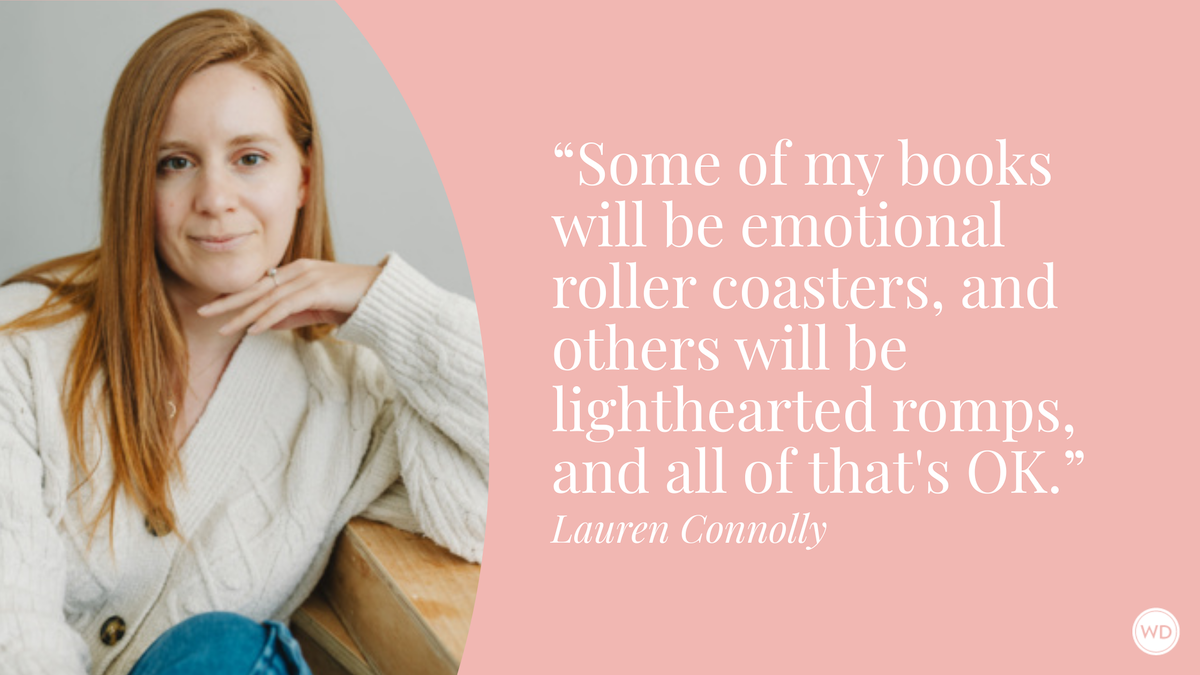Writing Sequels: 7 Rules for Writing Second Installments
Your first book was well received—hooray! But how can you ensure success when writing sequels? These 7 secrets will help you pen part two with finesse.
Editor's Note: This article first appeared in Writer's Digest magazine. Check out the latest issue here or subscribe.
Why are there so few great sequels? In the realm of movies, rare favorites include Toy Story2 and 3, The Dark Knight, and Aliens. Among books, The Da Vinci Code was a terrific sequel to Angels & Demons (The Lost Symbol didn’t quite draw the same attention).
Note that writing the next book in a series is not necessarily the same as writing a sequel, because the overarching story line of a series is usually conceived in advance. With a sequel, writers are often starting from scratch with a new, independent plotline, often in response to reader demand. As a result, sequels can be difficult. They present certain advantages—namely, they’re much easier to market out the gate—but they also come with a host of challenges, the worst of which is often sky-high expectations.
How do you write a sequel without disappointing fans of the original? Here are seven rules I’ve learned through my own experience:
1. Don't just pick up where the last story left off.
The most obvious place to begin a sequel is where the previous story ended. This is what fans are always clamoring for: “What happens next?!” This, however, is also very often a classic example of non-professionals not knowing what they really want.
Readers liked the original story, and they think they want it to go on as it was. The problem, of course, is that the original story is over. There was a reason it ended in the first place: The plotlines were resolved!
To artificially restart a satisfactorily resolved story, especially with the same or similar conflicts as before, is a recipe for disaster. “No, wait!” you’re telling the reader. “There’s more I didn’t tell you! There’s an Indian graveyard underneath the first graveyard (Poltergeist 2)! There was a second island full of cloned dinosaurs (The Lost World: Jurassic Park)!”
It’s going back to the buffet for a second helping you could have done without, and everyone knows it. What readers and viewers really want, even if they don’t quite know it, is to once again feel the way the first story made them feel. But, as they say, you can’t go home again.
Ironically, the only way they can feel the way they did before is for you, the writer, to give them something fresh and different.
2. Give the reader something new.
This is the real challenge of writing a sequel. Of course, it’s the challenge of every new project—but it’s especially difficult when writing a sequel because the pressure is so intense to do more of the same. After all, that first story is a proven winner.
Resist the pressure. It’s a paradox: The more different your sequel is, the better your chance of success. The best sequels completely reinvent their characters and the central story. Aliens even switched genres—it’s an action-adventure movie, unlike Alien, which is a straight horror film.
Resolving lingering plotlines and character arcs from the first project is the least important part of a sequel. What you want are new plotlines and new character arcs. In framing The Order of the Poison Oak, the first sequel to my novel Geography Club, I started with a different setting, choosing a summer camp so it would feel different at the outset from the first book, which is set in a high school.
3. Make the stakes different.
A different frame for the story is a good start—but it isn’t enough. There’s a big tendency in sequels to give us as much as possible of the same. In other words, recreate the original plot—but on a grander scale. This can give the story the illusion of being “different.” In Speed 2, instead of a bus they’re on a cruise ship! Readers will not be fooled.
The Godfather Part II, for example, continues to tell the story of Michael Corleone’s descent from family man to cold-hearted monster, but it also dares to go backward in time to tell the story of Vito Corleone, making him a case study for the darker side of American capitalism.
And sometimes “bigger is better” does work, as in The Hobbit’s sequel, The Lord of the Rings (originally written as a single volume). But even here, at the same time author J.R.R. Tolkien is massively expanding his scope to include the fate of all of Middle-Earth, he is also moving his focus closer, zeroing in on the intimate relationship between Frodo and Sam. The Hobbit is the story of a character discovering an unforeseen capacity within himself, but The Lord of the Rings is about another character realizing no one can succeed alone.
4. Play with Expectations.
People come to sequels of beloved works with loads of baggage—specifically, expectations. If you can get past the intimidation that comes with it, that’s a fantastic opportunity for the writer, who can confound those expectations. If you do it well,
the audience will love you for it.
In Alien, the android is the villain. So, of course, everyone (including Ripley) expects that the android in Aliens is also going to be a villain … until he turns out to be the hero. When we first meet Sarah Connor and the Terminator in The Terminator, she’s a carefree young woman and he’s the relentless android out to destroy her. But in Terminator 2: Judgment Day, Sarah is completely transformed—now a battle-ready warrior as a result of her experiences in the first movie. Even more interesting, the Terminator is now Sarah’s ally against the nefarious T-1000. Once again, things that might have seemed predictable become defiantly not so.
5. Include at least one great new character.
Set out to include at least one very memorable new major character: someone unlike any of the characters we’ve met before. Try to make this character as different from your main hero as possible. It almost guarantees that the story will feel more fresh.
In The Thing I Didn’t Know I Didn’t Know, another sequel to Geography Club, I created Vernie Rose: a very confident, very opinionated 72-year-old woman. Because almost all the characters until that point had been teenagers or 20-somethings, she couldn’t help but shake things up.
6. Don't be afraid to let beloved characters go.
Yes, readers and viewers are drawn to a sequel because of the characters. But if you’re adding new players, it won’t take long for a cast to become unwieldy.
Yoda makes a massive impression in The Empire Strikes Back, but he barely registers in The Return of the Jedi. Why? Because he serves no real plot purpose in the latter movie. In your sequel, keep only the characters that perform some essential plot function front and center. The others? Give them a cameo if you must, but otherwise let them go.
7. Identify what made the first book special, then offer more.
At the risk of contradicting my earlier advice, while it’s important for a sequel to shake things up, it’s also important to remember what made people like the project in the first place.
It’s one thing to add new characters, mix up the stakes and even alter the genre slightly. It’s another thing to fundamentally betray your readers. It’s hard to imagine a sequel to a ghost story ever working as a romantic comedy.
Consider what it was about the first book that made it so successful that it’s worthy of a sequel to begin with. What exactly did people feel, and why? Was it the tone? The theme? The characters? A fresh take on a tired old genre?
Try to pinpoint exactly where the magic happened, and make a point to pay homage to it in your sequel. Then do what you can to shake things up and defy our expectations for the better.
Brent Hartinger (brenthartinger.com) is the author of many successful sequels, but his latest novel, Three Truths and a Lie, is a dark and twisty stand-alone YA thriller.









